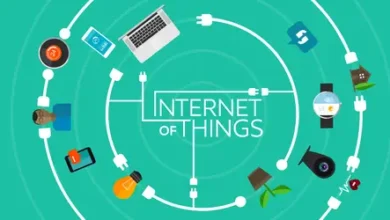Inclusive Design: Technology Making the World Accessible for All

Imagine a world where barriers are non-existent, and everyone has equal access to information, opportunities and experiences. This is not just an utopian dream anymore; it’s becoming reality through the power of technology. Welcome to our blog post titled “Inclusive Design: How Technology is Making the World Accessible for Everyone.” In this article, we discuss how innovators across different fields are harnessing technological advancements to create solutions that cater to people of all abilities. We’re witnessing a paradigm shift towards ‘design for all’ breaking down physical or cognitive barriers that once limited certain sections of population from fully engaging with their surroundings or in activities they love. From apps aiding visually impaired individuals navigate city streets independently, to AI-driven software enhancing learning experience for students with special needs get ready as we unravel amazing stories about how technology is reshaping our world into an inclusive sphere!
“Understanding the Concept of Inclusive Design”
Understanding the concept of inclusive design is essential in creating a world that is accessible for everyone, regardless of their abilities or disabilities. Inclusive design goes beyond traditional accessibility measures to consider the diverse range of needs that people may have. It involves designing products, services, and environments that can be used by as many people as possible, without the need for adaptations. By incorporating inclusive design principles, technology has played a significant role in making the world more accessible. For example, smartphones with customizable settings cater to users with varying vision or hearing abilities.
Websites with responsive design layouts adjust to different screen sizes, benefiting users with motor impairments. Inclusive design also extends to public spaces, such as buildings with ramps and elevators for individuals with mobility challenges. Furthermore, inclusive design promotes a sense of belonging and dignity for all individuals, fostering a more inclusive society. It encourages empathy and understanding of different perspectives, leading to innovative solutions that benefit a wider range of people. By recognizing the inherent diversity among users, designers can create products and services that not only meet the needs of those with disabilities but also enhance the experiences of all users. Ultimately, the concept of inclusive design emphasizes the importance of designing with empathy and inclusivity in mind, ensuring that everyone can participate fully in the world around them.
“Technological Innovations Promoting Accessibility”
The rapid advancement of technology has led to significant innovations that promote accessibility for people with disabilities. From screen readers and voice recognition software to adaptive controllers and smart home devices, technology is increasingly being designed with inclusivity in mind. Mobile apps are making it easier for individuals with visual impairments to navigate their surroundings, while wearable devices are providing real-time assistance for those who are deaf or hard of hearing. Furthermore, the rise of artificial intelligence has enabled the creation of more personalized experiences for users with various accessibility needs. These technological innovations are not only breaking down barriers but also empowering individuals to lead more independent and fulfilling lives.”
“Impact of Inclusive Design on Individuals with Disabilities”
Inclusive design has had a profound impact on individuals with disabilities, allowing them to navigate and interact with technology and the physical world more easily. Accessible websites and apps enable those with visual impairments to access information through screen readers, while adjustable settings cater to individuals with hearing impairments. Assistive technologies such as voice recognition software and adaptive controllers empower individuals with physical disabilities to use computers and other devices independently. Furthermore, inclusive design in the physical world, such as ramps and tactile indicators, enhances accessibility for those with mobility impairments. Overall, inclusive design is revolutionizing the way individuals with disabilities engage with technology and the world around them, promoting independence and inclusivity.
“Case Studies: Success Stories in Inclusive Technology”
One compelling example of the power of inclusive design is the story of Chris, a visually impaired individual who was able to navigate the digital world through advancements in assistive technology. With the help of screen readers and voice command software, Chris was able to access information and communicate with others in ways that were once unimaginable. This not only increased his independence but also opened up new opportunities for education and employment.
Another inspiring case study is the success story of Maria, a wheelchair user who faced challenges in accessing public spaces. Through the use of smart city technologies such as accessible mapping apps and sensor-based systems, Maria was able to navigate her surroundings with greater ease and confidence. This not only improved her quality of life but also promoted a sense of inclusivity in her community. Furthermore, the story of Alex showcases how inclusive design in mobile applications has transformed the gaming industry.
By incorporating customizable controls and audio cues, individuals with motor disabilities like Alex were able to enjoy popular games alongside their peers, breaking down barriers and fostering a more inclusive gaming environment. These case studies highlight the impact of inclusive technology in empowering individuals with disabilities to lead more fulfilling lives and participate more fully in society. By embracing the principles of inclusive design, technology is breaking down barriers and creating a more accessible world for everyone.”
“Challenges and Future Scope for Tech-Enabled Accessibility”.
Despite the immense progress made in tech-enabled accessibility, there are still challenges that need to be addressed. One major hurdle is the lack of awareness and understanding among developers and designers about the importance of inclusive design. Additionally, there are issues related to the cost of implementing accessibility features, especially for smaller businesses and organizations. Moving forward, the future scope for tech-enabled accessibility is promising. With advancements in artificial intelligence, machine learning, and other emerging technologies, there is great potential to further improve accessibility for all individuals. It is crucial for stakeholders to continue collaborating and innovating to ensure that technology continues to make the world more inclusive for everyone.





